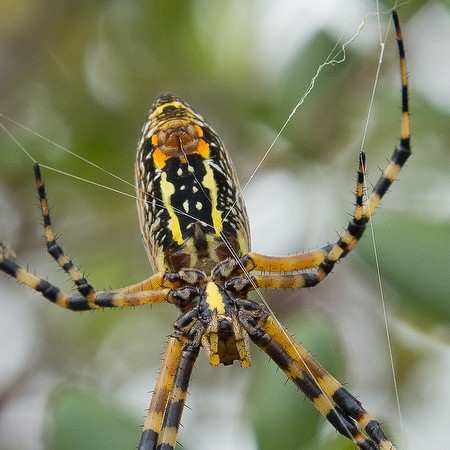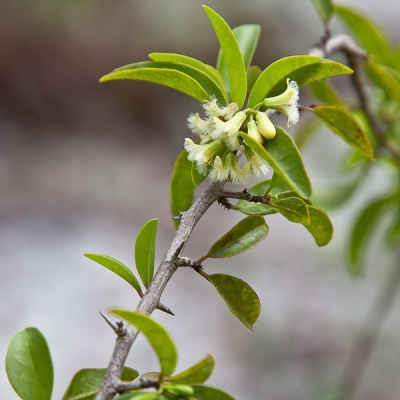Hog Plum
Ximenia americana
Olacaceae
Trudging across the burning scrub sands and down into the deep dank swamp yesterday, orange was the new black: day-glo orange fungi in the swampy shadows, pale orange saw palmetto fruits full of prostate pseudo-therapy, orange tail-end on the garden spiders, and orange Hog Plum “plums,” many on the ground.
Here’s a poorly chosen name, because “Hog Plum” to other folks refers to edible species of Spondias (and even to additional “plum”-making plants). Another reference-book name for today’s species is Tallow Wood, but in my narrow world nobody actually seems to call it that.
The oil is abundant in seeds from today’s species and in its cousin the Old World Ximenia caffra, with a history (and future?) of all things oily, such as medicines, lamps, leather treatment, and most prominently cosmetics. Here is a quote from modern promotional blurb, “it contains unsaturated fatty acids and has an exceptional nutritional value to nourish the skin while moisturizing, softening and revitalizing the skin.” The paleo-cosmetic diet! Being as fashion-forward as can be, John and I mashed some and nourished and revitalized our facials.
And if we suffered any discomforts or snake mishaps, we’d have been in a good way. The reported doctor uses would fill a page. Name an ailment: somebody somewhere used Ximenia oil to fix it, from STDs to Cobra bites, hopefully not in the same patient.
Even beyond medicine, Hog Plums have more historical uses than you can shake a thorny branch at. Useful parts include the stems, roots, and fruits. The strong wood serves for handles, spears, and assorted kitchen implements. And of course firewood. (I’ll bet that oily wood burns dandy.)
The fruits are food, although mostly pit, not tempting, and impossible to store. Come on now, don’t go eat them. There is a reported laxative consequence. Gopher Tortoises eat the plums*, with there being at least anecdotal geographic association between Hog Plums and Tortoise nests. That would be a fun geo-statistical study for a class with apps. I wonder if hogs like Hog Plums. Monkeys do.
So obviously the fruits are animal-dispersed. But that’s not all. The fruit pits have spongy flotation material. Their ability to bob safely for months is demonstrated. Mother Nature conducted the best experiment, floating Ximenia americana all around the tropical world. Its ethnobotany is richer in Ethiopia than in the Americas.
Hog Plums prefer hot dry habitats, mostly scrub locally, although they also occupy wet mangrovey places, which are “physiologically dry” thanks to salt. Ximenia is one of many species divided between dry habitats and wet-yet-dry situations.
Hog Plums are “facultative” root parasites. Facultative means they can take it or leave it. In a greenhouse they do not need to take it. Hog Plum may have the plant world’s largest known haustoria (suckers) which attach indiscriminately to the roots of neighbors, or to their own roots, or to rocks, or to plastic scraps. The suckers can be over an inch in diameter.
One final odd feature, apparently a protective adaptation for surviving youth in nasty sands. As germination proceeds, the first two foliage leaves, instead of unfurling optimistically to greet the sun, bend straight down. They tuck snugly into the nook between the cotyledons and stem, terrified like a kid frozen in the car on the first day of school. Perhaps the leaves fear a Gopher Tortoise lumbering out for an oily snack.
———————————————————————————
*Ever seen Gopher Tortoise scat? They may appreciate a little regularity from that Hog Plum oil.




